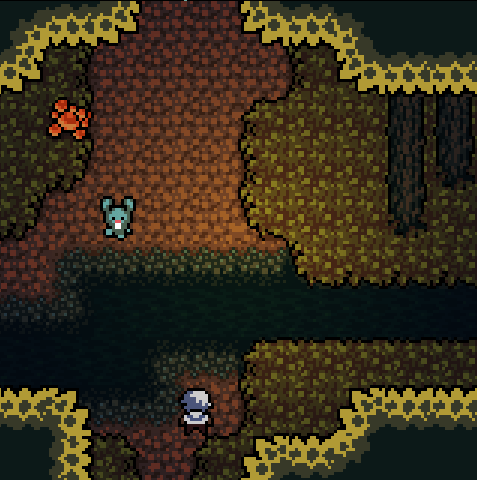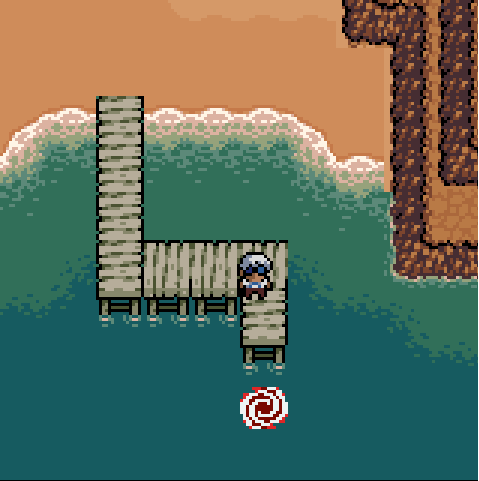- Wondering how to get Monopoly GO! free rolls? Well, you’ve come to the right place. In this guide, we provide you with a bunch of tips and tricks to get some free rolls for the hit new mobile game. We’ll …
Best Roblox Horror Games to Play Right Now – Updated Weekly
By Adele Wilson
Our Best Roblox Horror Games guide features the scariest and most creative experiences to play right now on the platform!The BEST Roblox Games of The Week – Games You Need To Play!
By Sho Roberts
Our feature shares our pick for the Best Roblox Games of the week! With our feature, we guarantee you'll find something new to play!Type Soul Clan Rarity Guide – All Legendary And Common Clans Listed!
By Nathan Ball
Wondering what your odds of rolling a particular Clan are? Wonder no more, with my handy Type Soul Clan Rarity guide.
Anodyne Review
Describing the indie creation of two-man team Sean Hogan and Jon Kittaka requires more than a single comparative line, and much more to understand it. I’m still working on understanding it. But the experience of Anodyne is The Legend of Zelda: Link’s Awakening set inside a Hieronymus Bosch triptych. While much of the adventure is surreal and abstract self-reflection, just as much is cemented in the concrete gaming mainstays of monster slaying, item collection, and puzzle solving.

Anodyne is as beautiful as it is disquieting, challenging as it is engrossing.
Describing the indie creation of two-man team Sean Hogan and Jon Kittaka requires more than a single comparative line, and much more to understand it. I’m still working on understanding it. But the experience of Anodyne is The Legend of Zelda: Link’s Awakening set inside a Hieronymus Bosch triptych. While much of the adventure is surreal and abstract self-reflection, just as much is cemented in the concrete gaming mainstays of monster slaying, item collection, and puzzle solving.
Anodyne‘s story—which is itself abstract and simply used as motivation to begin exploring the world—begins with the Village Elder summoning our hero, Young. The Darkness has begun to spread across The Land, in search of the Legendary Briar and his powers; Young must find and protect the Briar before it is too late. In reality, this backstory, its characters, and associated lands are creations of Young’s subconscious, explored through a dreamscape that ends whenever Young chooses not to continue after “dying,” in which he wakes up in a shabby apartment.
For the duration of the dream, however, Young is the vocally silent protagonist, brandishing a broom as his weapon and traveling The Land in search of items of power. While some of these items include broom upgrades and special keys to unlock doors, the majority are collectible cards that each contain the likeness and anecdote of one enemy, ally, or object. These cards are used to open gates to the deepest regions of The Land, additional heart containers (red moths), secret areas, and eventually the final boss.
Young’s exploration in Anodyne takes the form of a classic top-down, 2D adventure, most reminiscent of Link’s Awakening. A primary overworld area connects the wide variety of regions and dungeons present in The Land, which vary from a mountain range pockmarked with caves to a blood-filled swamp, a circus-themed dungeon to one within a hotel high-rise. The variety of locations to explore, as well as their often disturbing juxtaposition of beautiful backdrops and morbid occurrences, are one of the most striking features in Anodyne. The bloody swamp is home to non-aggressive beasts and a woman whose hair can’t handle humidity, while a black-and-white, picket-fenced suburbia is overrun with shadowy murderers.
No matter its theme or aesthetic, each area is filled with monsters to fight, puzzles to solve, and treasure chests to open. Young utilizes two skills throughout his adventure: broom sweeping and jumping. Each is used to overcome a variety of challenges; while Young’s broom is his method of attack, it also picks up and relocates clouds of dust, which allow him to float on water without drowning and block lasers, among other uses. Jumping also becomes a critical ability once it is learned, allowing Young to hop over pits, spikes, enemy projectiles, as well as bounce on puzzle-related springboards and other objects.
Both abilities are crucial to solving the constant stream of puzzle rooms that stand between Young and the boss or treasure of each dungeon. Puzzles range from basic “kill every enemy to open the gate” situations to much more challenging and rewarding mental trials. Pressing buttons that are inaccessible, getting past lasers or steam that can’t be shut off, or coercing a silverfish to stand on a specific tile are just a few of the tasking but rewarding puzzles present. Many of my favorite moments in Anodyne involved finally figuring out a puzzle that seemed impossible upon my first, or even fifth, visit to the room, with a triumphant “a-ha!” moment.
Unfortunately, while it’s just as crucial to completing dungeons, the jump mechanic is much less fulfilling. Young starts off merely needing to jump over single squares of danger, but the jump requirements quickly escalate to unforgiving platformer standards. Pits expand to half the size of a room, forcing Young to use boosts for a running jump across, landing with barely a pixel to spare. Diagonal jumps—and at times even running diagonal jumps—become entirely dependent upon finger dexterity instead of puzzle solving. While there’s still a sense of satisfaction upon completing a challenging jump, it’s weighed down by the twenty attempts and deaths it took to get there.
Even with its finger-breaking jump standards, though, Anodyne is a continually fulfilling and rewarding experience. Each dungeon and region explored, character and card retrieved, provides more insight into Young along with more unanswered questions. The bosses he’s imagined each know some part of him, from the Wall who asks when he’s going to grow up and stop playing “those Nintendos” to the amorphous Rogue who understands his fear of becoming trapped in the uncontrollable cycle of birth, death, and pain that awaits in the real world. The silent, identical humans who wander dungeons cannot be interacted with, nor can anyone you save—or attempt to save—within those same dungeons. Young is very much alone, even in this dreamworld he’s created as an escape, and which is equally populated with death as it is beauty.
Possibly the most surprising aspect of Anodyne is that even outside of these truths about Young—the signboards and conversations that reveal pieces of our hero, the ambiguously foreboding warnings from enemies and allies alike—there is a completely satisfying and enjoyable game, based entirely on its world, dungeons, puzzles, and challenges. Its story and purpose is extremely abstract and almost a puzzle itself, but it’s also more of a bonus on top of an already exquisite love letter to action adventure games of the past. Anodyne is full of gifts to its players—a green tuniced woodcutter named Rank, the fast-travel hub of the nexus, the end-game ability that opens up an entirely new world of exploration—but is really a gift itself, wrapped with a bloody bow.

The good

The bad
More articles...
Monopoly GO! Free Rolls – Links For Free Dice
By Glen Fox
Wondering how to get Monopoly GO! free rolls? Well, you’ve come to the right place. In this guide, we provide you with a bunch of tips and tricks to get some free rolls for the hit new mobile game. We’ll …Best Roblox Horror Games to Play Right Now – Updated Weekly
By Adele Wilson
Our Best Roblox Horror Games guide features the scariest and most creative experiences to play right now on the platform!The BEST Roblox Games of The Week – Games You Need To Play!
By Sho Roberts
Our feature shares our pick for the Best Roblox Games of the week! With our feature, we guarantee you'll find something new to play!Type Soul Clan Rarity Guide – All Legendary And Common Clans Listed!
By Nathan Ball
Wondering what your odds of rolling a particular Clan are? Wonder no more, with my handy Type Soul Clan Rarity guide.








 “
“